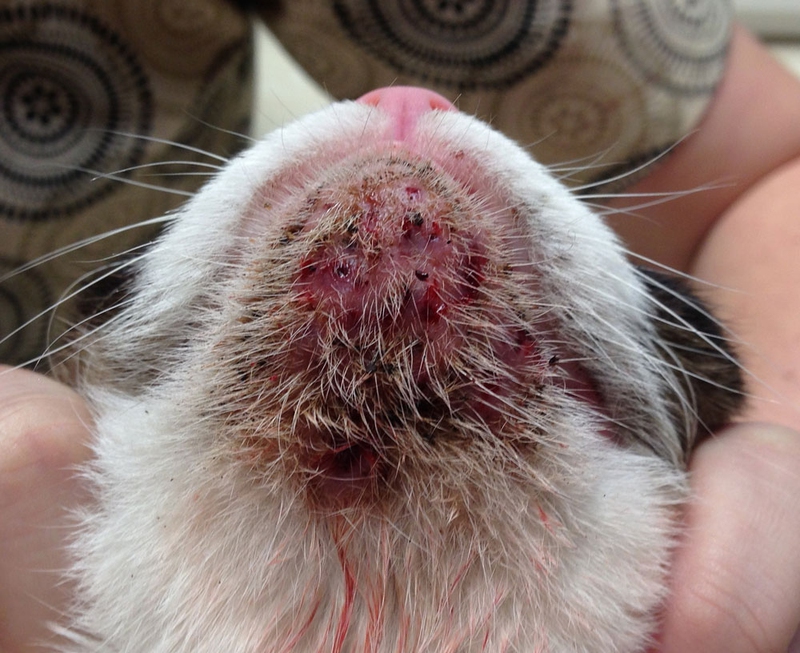In most cases, cats tend to remain healthy throughout their lives. This is particularly good because they are very close to their owners. However, cats are hard to tell when they are experiencing any discomfort or pain because they tend to conceal it. Though cats are so good at concealing pain, it is difficult for them to hide cat acne. Feline acne is a serious cat ailment that needs to be properly diagnosed and treated by a clinician. In cats, this condition manifests on the lower lip and the chin. While some cats may experience a single occurrence of this condition, some of them suffer from cat chin acne have a lifelong recurring complication. And the severity and frequency of the ailment vary from one cat to the other.

Symptoms of Cat Acne
Cat acne is one of the most common forms of feline diseases. In its mild condition, the complication hardly shows any symptoms. However, in advance stages, the disease may lead to draining of the lymph nodes and swelling of the chin. Cat acne will manifest itself in the following symptoms:
Black spores that are clogged.
Red and swollen spores on the head, chin and or lips.
In severe cases, the ailment can cause extreme irritation and lead to a secondary infection.
Why Does Cat Acne Occur?
Excessive secretion of sebum
Basically, a cat has two types of gland in its skin. These are:
The sweat glands which help the cat in regulating its body temperature.
Sebaceous glands which secrete a greasy substance known as sebum.
The majority of the sebaceous glands in the skin of a cat exists in the lips, scrotum, prepuce, chin and the base of the tail. These glands secrete sebum which keeps the skin of the cat supple and moist. Additionally, sebum makes the cat’s fur waterproof. However, excessive secretion of sebum in cats can lead to formation of feline acne.
Predisposing factors
Normally, cats mark their territories by rubbing their faces and chins against objects. If after doing this your cat leaves a greasy substance and black spots on the surface of such objects, it is an indicator that the cat is producing too much sebum. Additionally, cats that constantly mark their territories are at a greater risk of contracting this ailment.
Other causes
While sebaceous glands that are hyperactive can predispose the cat to this condition, the ailment itself is caused by a bacteria that normally exists on the surfaces of water and food dishes. Generally, cats between the age of two and four years are more prone to this condition. This is because cats within this age experience a hormone surge. In some cases, cat chin acne can be associated with allergic responses by the cat to rubber toys, dishes or medications.
How to Deal With Cat Acne
While some of the symptoms of this condition are obvious, it is not advisable to diagnose the infection on your own. Instead, you should take the cat to a professional. Normally, vets scrape the affected area in order to rule out other complications such as ringworm. If the vet ascertains that the cat is suffering from cat acne, he or she will recommend any of the following:
Oral antibiotics
Vitamin supplements
Corticosteroids
Topical treatments
A shampoo containing benzoyl peroxide
Home Care for Cat Acne
Rather than being treated, feline acne is managed. In its mild stages, the condition may be managed at home using the following remedies:
Use metallic food and water dishes for the cat as the pores in plastic dishes and cracks in ceramic dishes can harbor the bacteria that causes cat acne.
Clean food dishes regularly in hot water.
Apply a compress of cotton balls and lukewarm water to the affected area about twice a day and pressing gently.
Avoid giving foods that the cat may be allergic to. Generally, you should avoid giving the cat food that contains wheat, corn, gluten and soy.
View All Comments /Add Comment